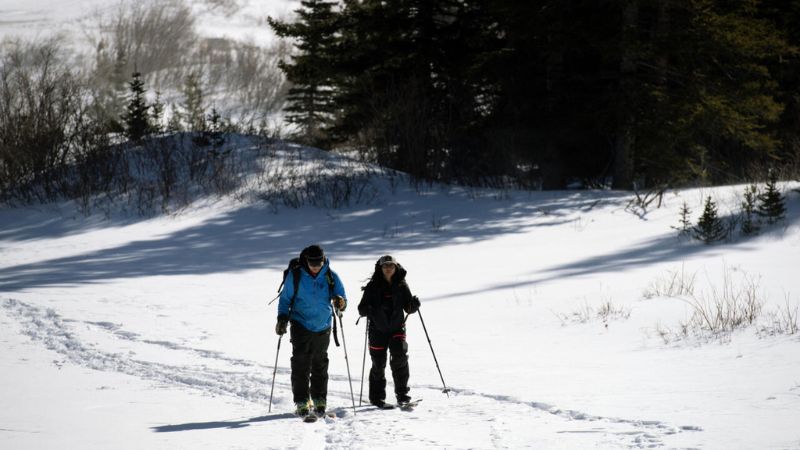Two scientists, equipped with skis and clipboards, stare down a dazzlingly white, tree-lined valley of the Rocky Mountains at the long hollow tube they had just plunged vertically into a pristine snow drift.
“Twenty-four inches, that’s not so bad,” Brian Domonkos says before grabbing the snow-filled metal cylinder and attaching it to a small scale swinging from his colleague’s ski pole.
This accurate measurement technique, first conducted using an improvised set of milk scales, has been repeated on this exact place every year since 1966, to evaluate the quantity of water trapped in Colorado’s critical snowpack.
And, while the distant, stunning Mosquito Creek area looks like a different planet from Los Angeles, the data it yields remains vital for calculating how much water will reach the parched, sprawling cities of the American West each summer.
“We’re all one water system,” explains Domonkos. “Fifty to 80 percent of all the water we use in the West comes from mountain snow melt.” The stakes are exceptionally high in this particular year. The region’s massive reservoirs have reached record lows after more than two decades of drought, exacerbated by human-caused global warming.
While winter has finally brought biblical rains to coastal communities, much of it has already been absorbed by the Pacific Ocean. So it is this powder, stacked between pine trees atop Colorado’s 10,000-foot-high (3,000-meter-) plateau that will determine how much water is accessible to distant urbanites in the next dry months.
“The April snow survey measurement is really the pinnacle, the peak of the snowpack for most of Colorado,” says Domonkos. “That peak snowpack is the amount of water that’s actually going to run off.”
- Grizzly bears – Colorado Snow Survey staff like Domonkos examine and repair hi-tech, automated snow monitoring stations distributed over the Rockies, in addition to taking manual measures at dozens of similar locations.
- According to his colleague Nagam Gill, the cumulative data they produce allows scientists to anticipate the year’s snowfall. Everyone from local ski and snowmobile resorts to the state’s snowplow operators, foresters, and hydroelectric power providers is looking forward to their production.
- Perhaps more importantly, Colorado is required to share a certain proportion of the water it gets each year with downstream states.
- If you calculate the snowfall for the year and send too much water down the river, “you’re never going to get that water back,” Domonkos added.
- Nonetheless, both experts agree that the work has its perks.
- It typically takes the couple to spectacular unspoiled peaks and valleys of Colorado, New Mexico, Arizona, and Wyoming by ski, snowshoe, or snowmobile.
- Hundreds of other scientists travel to the most distant locations on horseback or by air from as far away as
- Alaska to undertake the same tasks.
- “It’s pretty much a dream job,” said Domonkos, who occasionally paused the interview to quench his thirst with a scooped handful of pure white snow.
- He said he frequently encounters moose and elk and used to run into grizzly bears — “a respectable amount” — when he worked in Montana.



